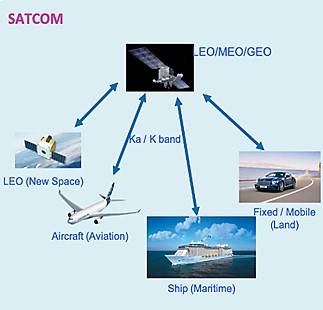SECURITY AND TRANSPORT
The Security & Transport Cluster promotes R&D and innovation to support the security, transport and statellite sectors. These efforts include working with the relevant public agencies, industries and synergising capabilities within the local research community that span across a range of technologies such as artificial intelligence and data science, electronics, modelling & simulation, advanced materials and robotics.
SECURITY
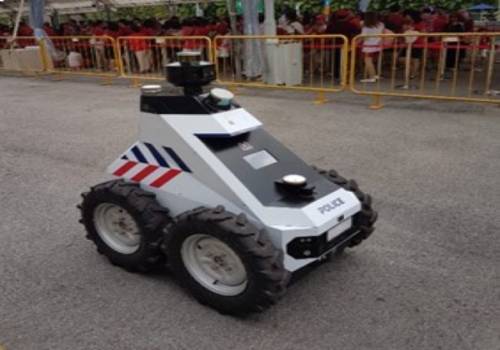
Security Robot for Patrol and Response
A*STAR has collaborated with the Home Team Science and Technology Agency (HTX) and the Singapore Police Force (SPF) to develop the Multi-purpose All Terrain Autonomous Robot (M.A.T.A.R.). The latest version, M.A.T.A.R. 3.0 was unveiled in 2019. Other than being able to navigate autonomously and scan for abnormalities, it can be equipped with a tethered Unmanned Aerial Vehicle (UAV) for aerial surveillance. The M.A.T.A.R. 3.0 was deployed during the 2019 National Day Parade and Marina Bay Singapore Countdown 2020 to assist in monitoring crowds, as well as for patrolling in dormitories to ensure safe distancing.
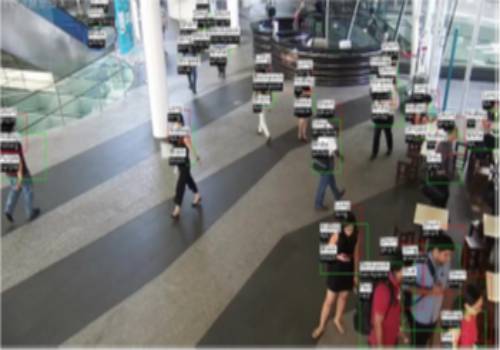
Multi-modal Surveillance
Effective large scale security surveillance for public places and key installations is highly challenging and requires continual innovation and improvement in technologies to combat the ever changing and growing threat scenarios. Key research areas in A*STAR include the development of multi-modal analytics (video, audio, text, etc.), mobile edge analytics and integrated solution to meet the various needs of both public agencies and industries. Continuous improvements in AI algorithms are made to derive better intelligence from real-life data sources.
TRANSPORT

Digitalisation for Air Traffic and Airside Management
A suite of capabilities is being developed to improve the productivity and safety of air traffic and airside management in collaboration with CAAS. For example, an ATM Digital Assistant was developed to recognise and transcribe voice conversations between air traffic controllers and pilots for safety and offline training purposes. Other examples include intelligent allocation of ground assets and energy harvesting of sensors for improved airside operations.
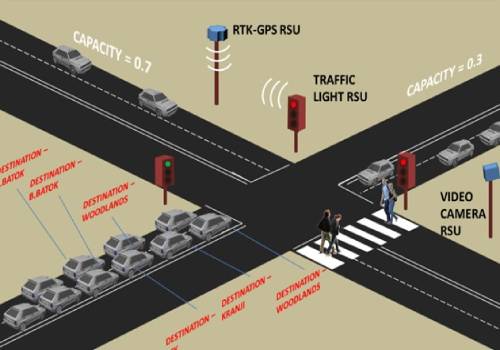
AI for Urban Traffic Flow
A*STAR is collaborating with the Land Transport Authority (LTA) to develop a next generation smart traffic light control system, also known as CoopeRative and UnIfied Smart Traffic SystEm (CRUISE). CRUISE uses advanced sensors, communications and AI predictive capabilities to build a comprehensive and intelligent traffic light system for island-wide traffic and pedestrian flows. AI-enabled techniques are used to provide real-time traffic flow conditions for entire road network as well as fast and automated detection of abnormal events such as incidents and congestion build-up. Another ongoing effort with LTA is the development of an intelligent solution for Bus Fleet Movement Optimization.
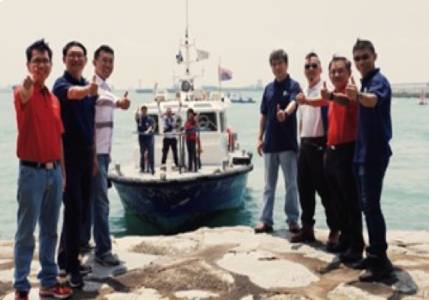
Robust & Affordable Communication for Safe Navigation at Sea
A VHF Data Exchange System (VDES) was developed to provide a robust communication system between ship-to-ship and ship-to-shore. A joint effort with ST Engineering Electronics, the project won the “Outstanding Maritime R&D and Technology Award” at the International Maritime Awards 2019. The system facilitates collision avoidance and real-time maritime communications applications such as search and rescue, marine safety information and notices, automated reporting and vessel traffic information services. VDES is one of several technologies that Singapore has adopted as part of its efforts to enhance safety at sea and at the port.
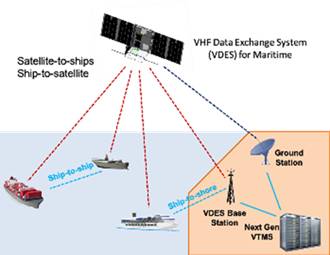
Small satellites with novel payloads
Leveraging current capabilities in millimetre wave technologies, A*STAR is developing a cost-effective inter-satellite relay for high bandwidth data communications at millimetre wave, meeting stringent requirements in size, weight & power. A key component is the lightweight phased array antenna technology for very high resolution electronics beam steering and pointing.
Another effort is the development of a 12U-size VDES satellite with proprietary signal de-collision algorithms, in partnership with MPA and local enterprises, to enhance maritime safety and efficiency for future e-navigation, improve port and shipping operational efficiency, and enable new opportunities in maritime data services.
A*STAR is also developing key technologies to enable high performance in small satellites, examples are in the additive manufacturing of complex satellite parts, novel antennas techniques, advanced optics and electronics.
A*STAR celebrates International Women's Day

From groundbreaking discoveries to cutting-edge research, our researchers are empowering the next generation of female science, technology, engineering and mathematics (STEM) leaders.
Get inspired by our #WomeninSTEM

